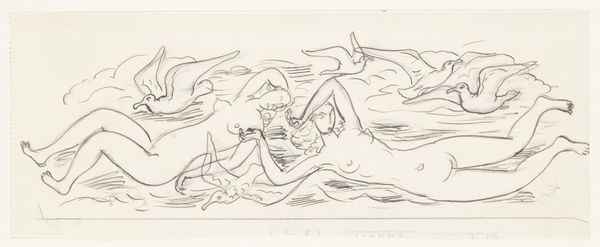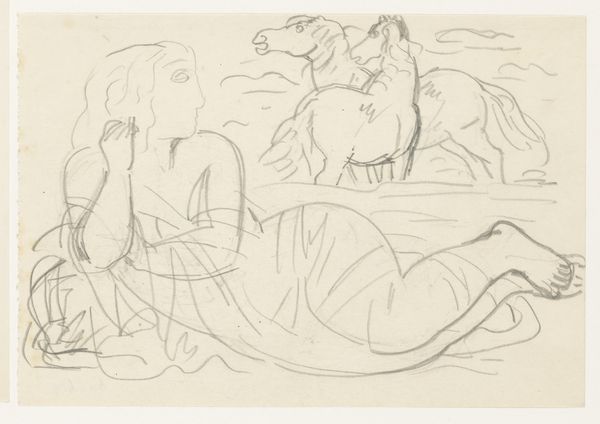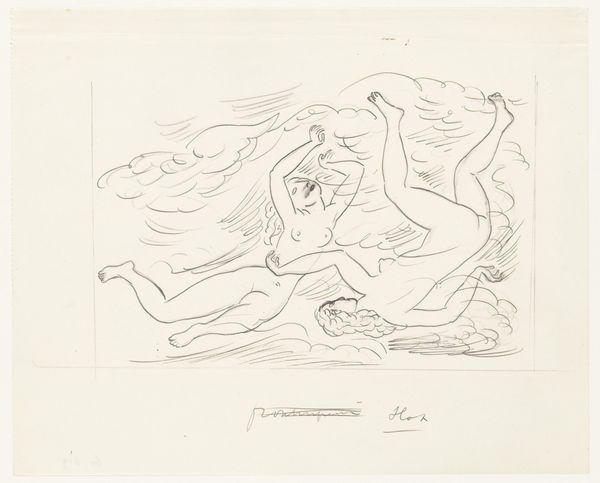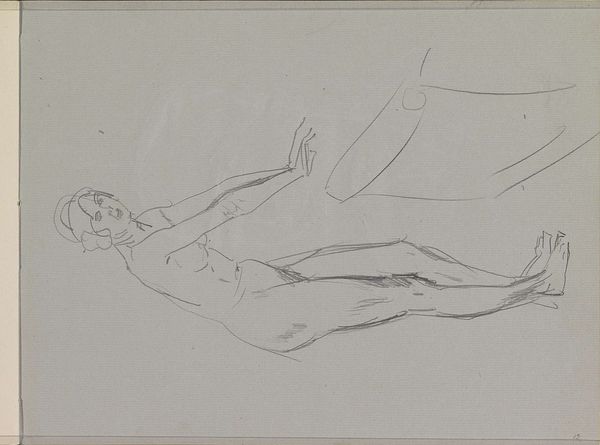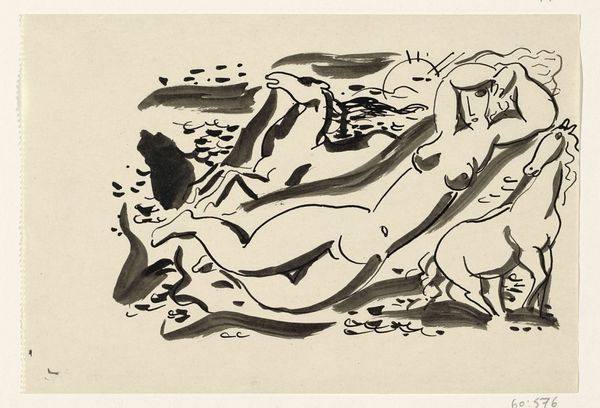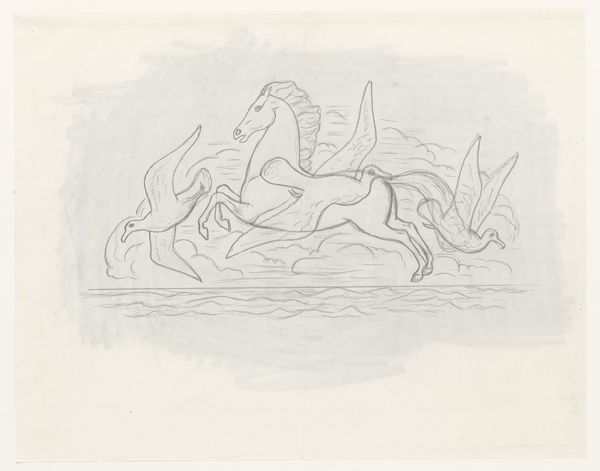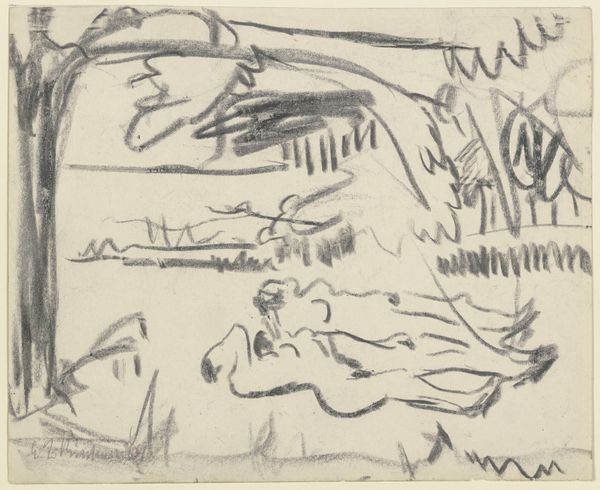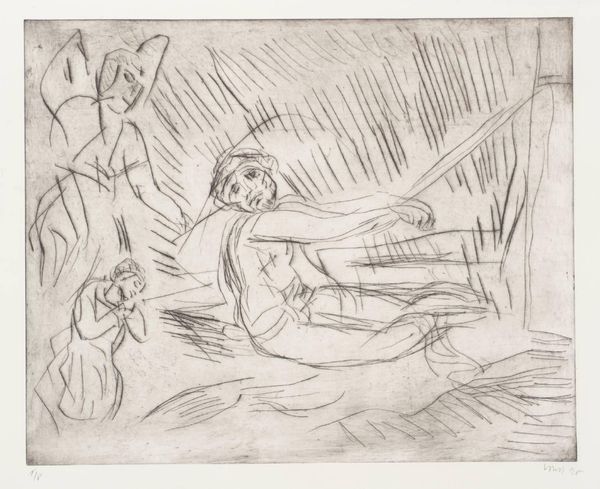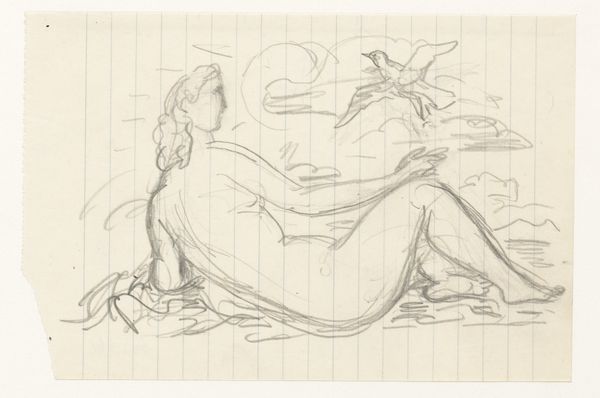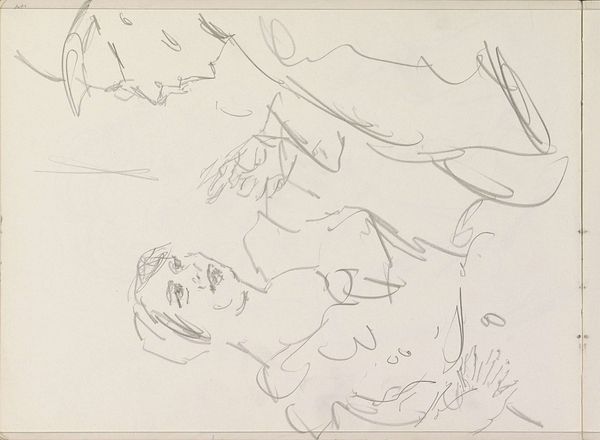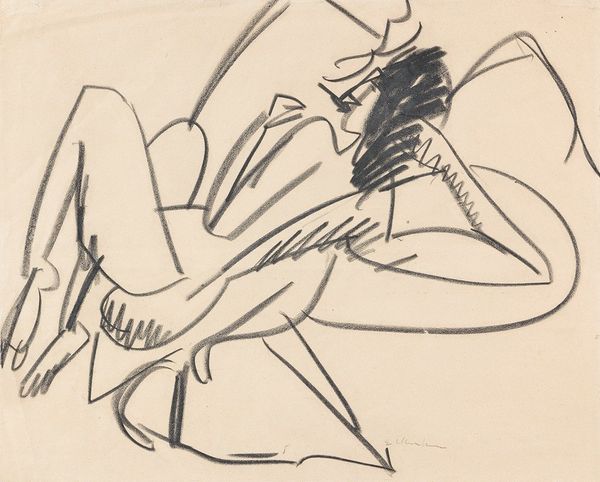
Dimensions: height 133 mm, width 193 mm
Copyright: Rijks Museum: Open Domain
Curator: This sketch, held here at the Rijksmuseum, is by Leo Gestel. It’s called "Two Nude Women Swimming" and dates roughly between 1891 and 1941. It’s rendered in pencil on paper. What’s your first reaction? Editor: There's a real sense of dynamism and fluidity. It almost feels unfinished, capturing a moment rather than a complete picture. The lines suggest movement in the water. Curator: Gestel, of course, moved through various phases, including impressionism and even a touch of abstraction here. The ambiguity of the figures’ relationship is interesting when considered through a feminist lens. Are they joyous and liberated, or somehow struggling? Editor: The sketchiness emphasizes the materiality – the tooth of the paper, the graphite deposit, the rapid hand of the artist. I’m curious about the conditions under which Gestel made this. Was it a quick study outdoors, a preparatory drawing for something more formal? It hints at the labor involved. Curator: Precisely! It's fascinating to situate this within discussions around representation, looking at how female bodies have been depicted, the male gaze, the politics of nudity. Editor: I'm more drawn to how this connects with other works where artists use swimming as a motif – to think about the working class and leisure, public bathing and social spaces in delft, and its materials Curator: The tension between a quick impression and the enduring cultural weight of representing the female form creates a fascinating dialogue. I think Gestel captured a transient moment within a wider tradition of looking and making. Editor: For me, it’s more about the energy of the process – that making tangible the feel of the pencil, the social and environmental landscape implied within the sketch and thinking more about what labour made that production even available Curator: Agreed. There are so many avenues to explore. Editor: Definitely gives you more to think about how simple acts are tied in bigger productions
Comments
No comments
Be the first to comment and join the conversation on the ultimate creative platform.
